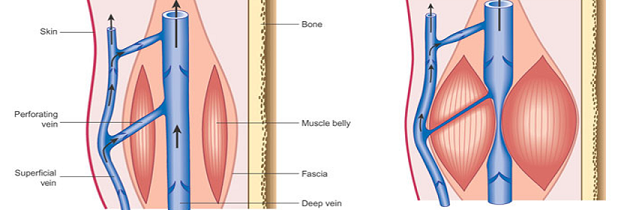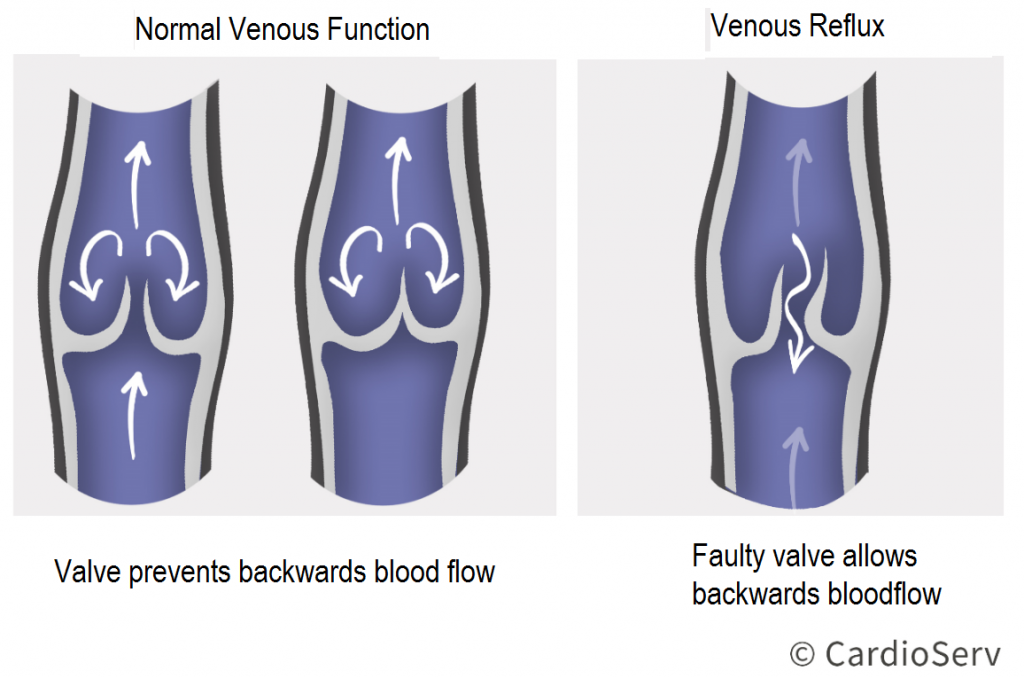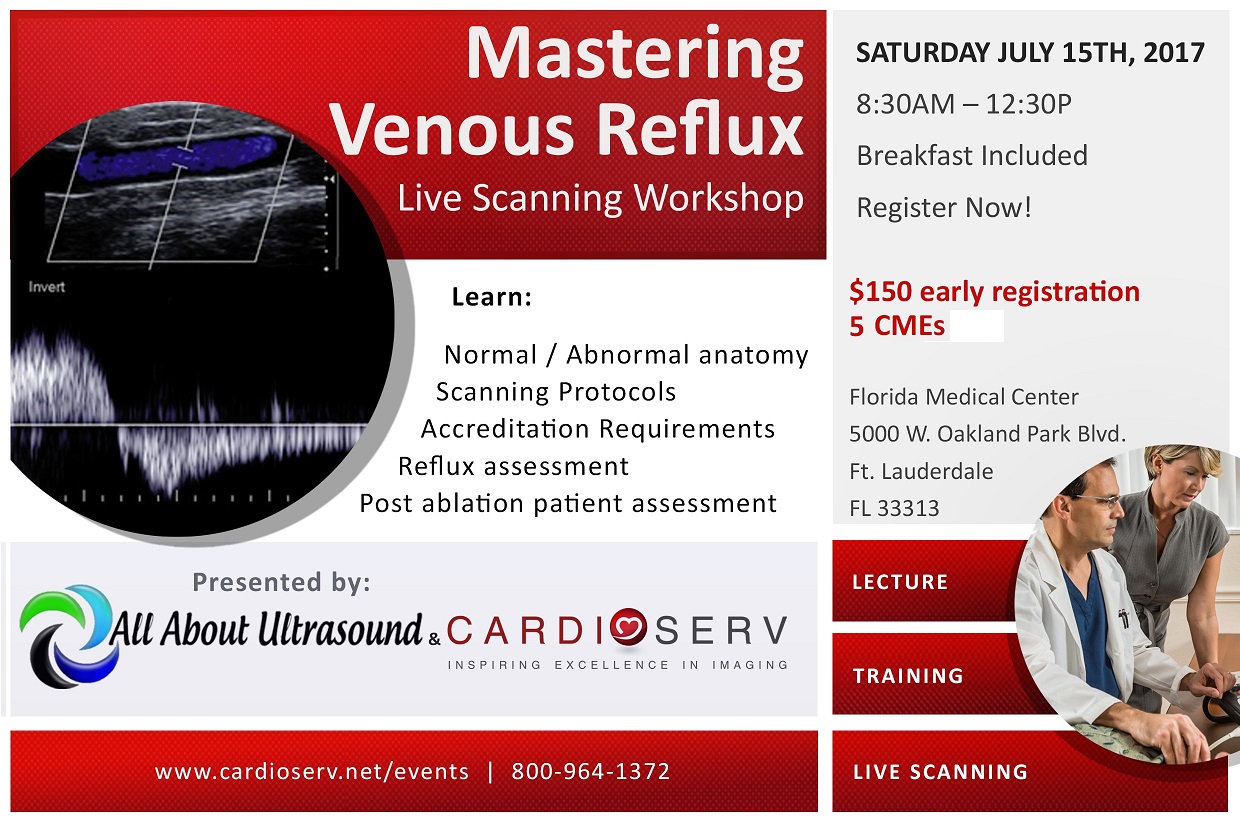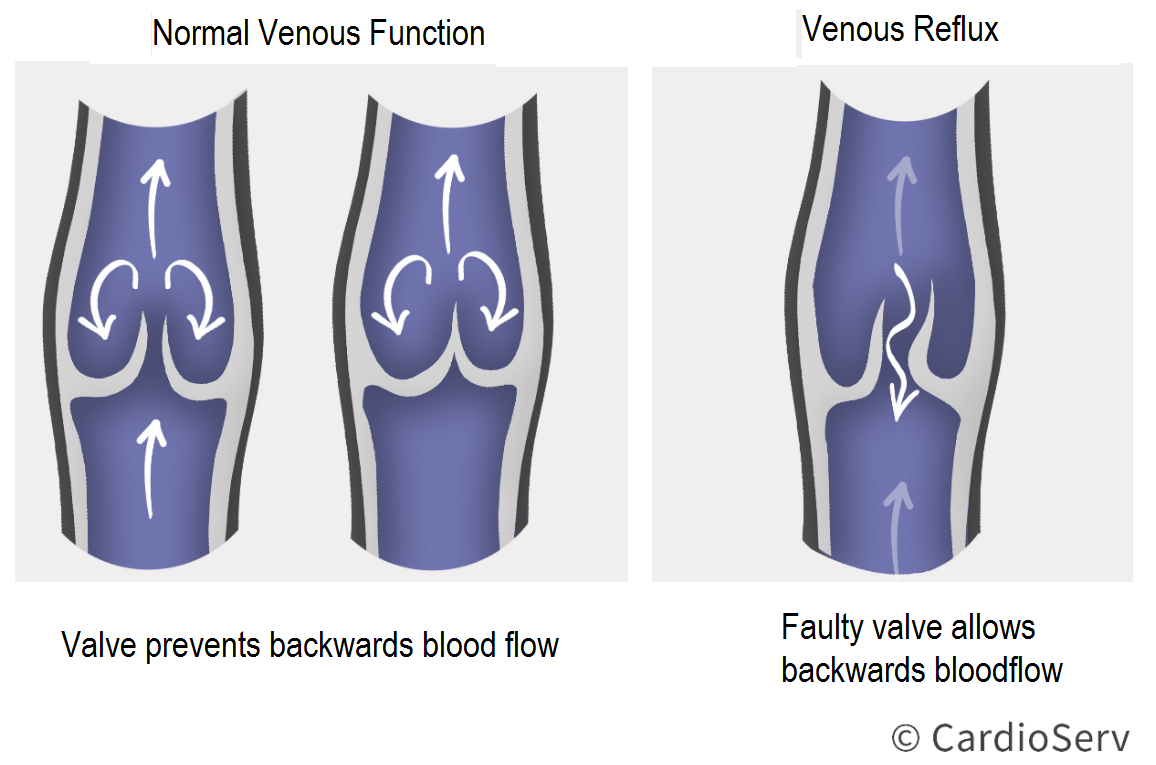There is a lot of interest in ablation procedures for venous reflux. Many of our readers have expressed an interest in learning more about venous reflux. What is it? How do we correctly diagnose reflux disease? What is the pre, during and post procedures for venous ablation? We are happy to announce our upcoming Mastering Venous Reflux conference on July 15th, in Ft. Lauderdale. We are collaborating with All About Ultrasound, to combine our extensive backgrounds in vascular ultrasound and will be providing 5.0 ASE CMEs. The conference is intended for the novice, expert or physician, interested in mastering correct techniques for venous reflux. This week we will review some basics of venous reflux.
VENOUS ANATOMY
Our arteries carry blood from our heart to the rest of our body, while our veins carry blood back to the heart. Sounds simple enough! Have you ever wondered how the blood in our feet travels UP towards our heart? The muscles in our calf and feet contract with each step to squeeze the veins, and push the blood upward. What prevents back flow? Our veins have one-way functional valves that stop the blood, from flowing backward. These functional valves are required to provide efficient blood return from the lower extremities.

Goldman MP, Bergan JJ, Guex JJ, editors. Sclerotherapy: Treatment of of Varicose and Telangiectatic Leg Veins, 4th Edition, Mosby © 2007.
VENOUS REFLUX
If the one way valves become damaged, blood flows backwards. This is called venous reflux, and is also referred to as venous insufficiency. In this condition, blood does not flow back properly to the heart. The blood sits in valve pockets and then begins to pool in the lower part of the legs.

When the veins and valves are weakened to the point where it is difficult for the blood to flow up to the heart, blood pressure in the veins stay elevated for long periods of time. This weakens the vein walls and leads to Chronic Venous Insufficiency or CVI.
THE ROLE OF ULTRASOUND
Ultrasound plays a vital role in identifying venous reflux. We will review the pathophysiology of venous reflux, signs and symptoms, ICAVL scanning protocols, diagnostic criteria for ablation, and much more at our upcoming Mastering Venous Reflux workshop.
Sign up before July 1st for the early registration discount!



Angela Mills, BA, RVS
Stay Connected: LinkedIn, Facebook, Twitter, Instagram
REFERENCES
Chronic Venous Insufficiency (CVI). (2017, March 16). Retrieved June 15, 2017, from https://my.clevelandclinic.org/health/articles/chronic-venous-insufficiency






